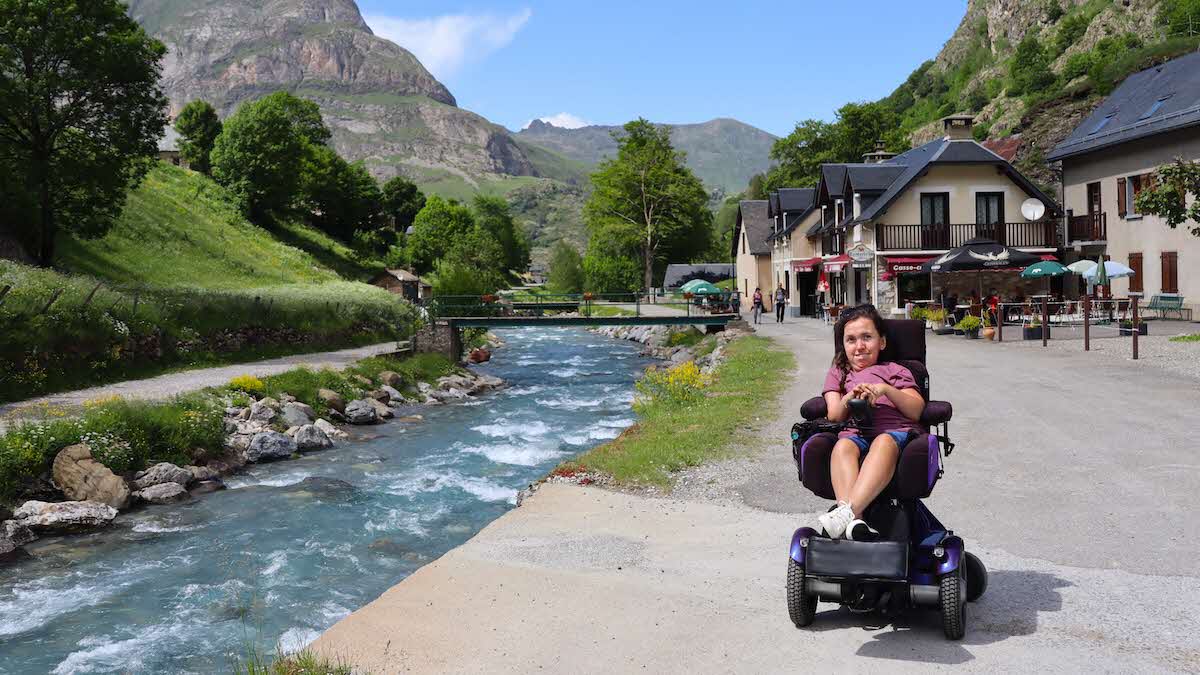France
Fall in love with the romance of France and explore its wondrous regions with us
View tours in FranceKarla Baker takes a trip to the French Pyrenees, discovering wheelchair-friendly attractions around every hairpin bend
 Karla at Cirque du Gavarnie
Karla at Cirque du Gavarnie
When you have limited mobility, it’s easy to assume that you’ll never experience true adventure – I certainly believed it before I got my caravan. But a journey to the French Pyrenees proved the idea is far from the truth!
Having arrived on French soil in late May, my partner Stephen and I took the scenic route south, enjoying stays in the Loire Valley (see the October 2022 magazine) and the Dordogne (February 2023 issue). Ultimately we arrived in the Pyrenees – and boy was it worth the drive.
Driving into Camping Pyrénées Natura, we were awestruck. Situated in the beating heart of the Pyrenees National Park, there were mountains towering above us in every direction, giving the illusion that we were nestled deep in a cosy valley, and not at an altitude of 1,000m. As the sun began to set, casting a warm pink glow on the snowy peaks, we sat back and listened to nature’s chorus: a stream rushing alongside the site, crickets chirping in the long grass and cowbells gently echoing from the hills. Already, we knew this would be the trip of a lifetime.
We could have happily spent all week relaxing on site, but we came to explore.
First on our list was the Col du Tourmalet, one of the highest paved roads in the Pyrenees and one of the toughest sections of the Tour de France.
Turning left and right, we began ascending the mountainside, already enjoying spectacular views. It wasn’t long before we reached the top – and, at 2,115m, we were awestruck all over again. Craggy, snow-capped peaks stretched out as far as the eye could see, contrasting against the vivid blue sky. Had it not been for the fresh breeze blowing through my hair, I would’ve mistaken our location for a movie set. Places like this surely don’t exist in real life, do they?
 Pont d’Espagne
Pont d’Espagne
The pinch-me moments kept on coming. The following day we visited Pont d’Espagne (Bridge of Spain), the historic stone bridge that once connected France to Spain. But it’s what flows underneath it that draws visitors in. During the short, smooth walk from the car park, the thundering of waterfalls grew louder, until we came face to face with two magnificent cascades. Down the mountain they rushed, converging at the bridge before trailing deep into the valley. We both sat there in stunned silence, enjoying the cool spray of the waterfall on our skin.
After an intense thunderstorm rumbled through the campsite the next morning, we opted for a more laid-back day. A wander around the nearby town of Lourdes was just what we needed.
Known worldwide as a major Catholic pilgrimage site, and for its waters that are claimed to heal the sick, Lourdes is a fascinating place. The focal point of the town – the Basilica of Our Lady of the Rosary – sits on the edge of the River Ousse. Around it, the atmosphere was calm – as hymns were sung over the tannoy, people prayed, while others quietly admired the striking architecture. As someone who is visibly (and content being) disabled, visiting a site where others go in an attempt to be healed was truly a unique experience. Whatever your beliefs, Lourdes is a thought-provoking town, rich in history and culture. (Just a mile or so from the Basilica you will find another Club overseas campsite partner – La Forêt Lourdes. Set in lush woodland, it is another great spot for a relaxing stay.)
Due to the very nature of the Pyrenees, the journey to any destination is often half the fun. This was highlighted the following day as we swept along the D921, guided by a jagged rock face on one side and a sheer drop to a torrential river on the other. The drive was almost as spectacular as our end-point – almost!
Cirque du Gavarnie was one of the places I was most excited about when planning our trip – and it didn’t disappoint. This amphitheatre-shaped valley was formed by glacial erosion, and the horseshoe of mountain hugs you as you explore its numerous hiking trails.
We opted for the main route, which is a level and smooth path, passing through the village before running alongside the river that is fed by the Gavarnie Falls. With a drop of 422m, it is the tallest waterfall in mainland France – although the vertical torrent was dwarfed by the colossal amount of rock surrounding it.
On that sunny afternoon, we strolled along the icy blue water’s edge, full of wonder at the natural world. A moment of pure perfection.
 Lac d'Estaing
Lac d'Estaing
With our trip sadly coming to an end, we had time to take in just one more attraction – Lac d’Estaing. We’d visited briefly earlier in the week, but atmospheric, threatening skies had cut our time short. And, as Pyrénées Natura was just three miles from this magnificent natural lake, it seemed silly not to visit more than once.
This time around, the skies were bright and the clouds that had shrouded the mountaintops had lifted to reveal sharp peaks which reflected in the still water. We sat at the edge, watching the bees enjoying the buttercups around us as we sipped drinks of our own. Mesmerising.
Our time in the French Pyrenees may have been all too brief, but it was a trip that Stephen and I will never forget. We discovered breathtaking views, rich culture and tranquillity at the core of this wonderful region. We also learned that adventure is out there for everyone, no matter what abilities you have.